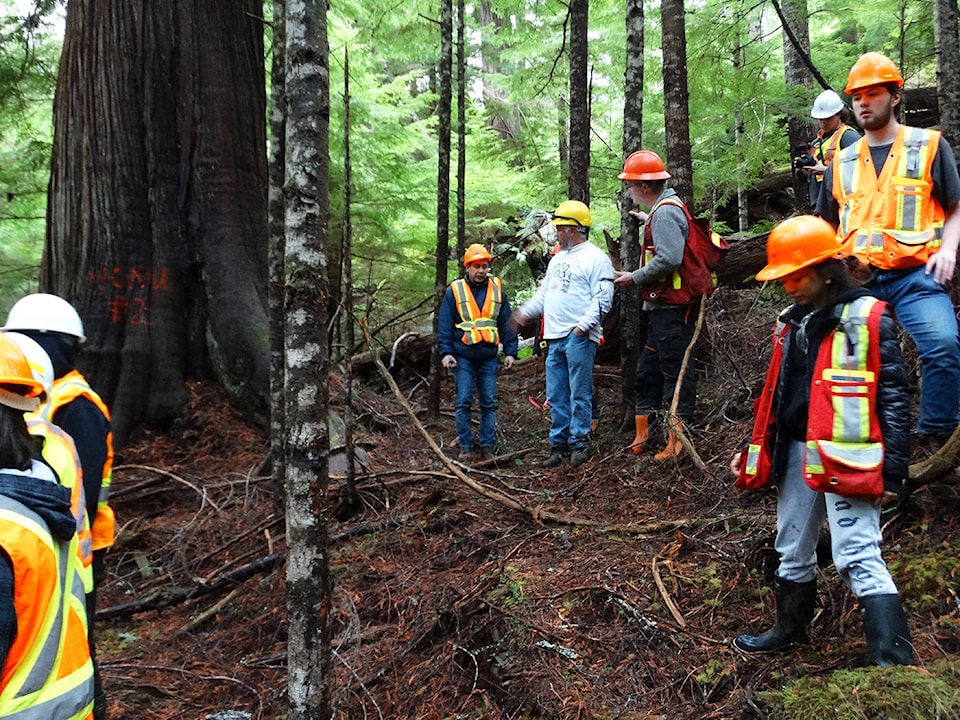Braden Majic
Carihi Mirror
Carihi students will soon have a large cedar log in its works yard as part of a long-awaited canoe carving project. Principal Fred Shaub calls it “the legacy Carihi gives to the community.”
It has been an idea in the works for nearly two years, Schaub says, and he is excited at the possible opportunities ahead for students and the community.
The Aboriginal Education Advisory Council gave their blessing for the project, which then led to further consultation with local First Nations, all giving their approval to Carihi.
“Then it was just waiting, waiting, waiting to get that call,” Schaub says.
The call finally came and Nov. 29 was the first day of a long journey. Several students and staff of Carihi got to go into the forest near Eve River, outside of Sayward, to see the tree that was to become the canoe.
It was a day of learning for many as forestry class students got to listen to BC Timber Sales workers explain their work and the tools they use, collect plant samples and record them, and get hands-on experience of the industry at work.
“The main bulk is Grade 9 students (here),” Schaub says. “Maybe this will spur something in them, to realize that forestry is not just falling trees.”
Video productions students came along as well to begin capturing footage in what will be a rewarding journey with memorable footage and thoughts towards this project from start to finish.
Local first nations carver Max Chickite joined the crew and students to select a suitable tree for a canoe to be carved out of it.
“Several workers at Carihi school approached me and several other carvers, they wanted to see something happen to get the youth working together,” Chickite says. “I see a lot of benefit working with non-natives and natives working together to understand each other through culture (and) pull them together.”
If all goes well with the selected tree being fallen and there are no surprises, then the planned canoe could be quite large.
“I think there is roughly 15 seats, so 14 paddlers and one steerer so I figure 40 to 45 feet (in length)” Chickite says.
While the tree has sustained itself for hundreds of years, when it is cut down and used for a project like this it is important that all of the tree has a purpose.
“We can get lots of use out of the log,” Chickite says. “Make canoe paddles, make masts, and even make use of the cedar bark.”
When looking at a tree, Chickite uses traditional knowledge for what an ideal tree looks like.
This includes looking for how much log there is to work with before blemishes like knots or branches
In this process, the Nanwakolas Council interviewed over a dozen carvers, including Chickite, to use their traditional knowledge on ideal trees to help them in their search for suitable ones.
Their surveying also found trees that would be healthy for this type of project, with no rot or hindering blemishes.
“For [BCTS to] be a part of that process is huge too,” Chickite says. “No more talking, everybody’s acting. That’s a huge step.”
With support from BCTS, survey crews of the Nanwakolas Council looked for large, old growth Cedar that are hundreds of years old and found only a few potentially suitable trees over the past several months.
Chickite chose his top three candidate trees for this project and the log was expected to be cut and delivered to the school’s works yard this week.
This is a process that will take time and Carihi Mirror writers will have it covered as the project progresses.
